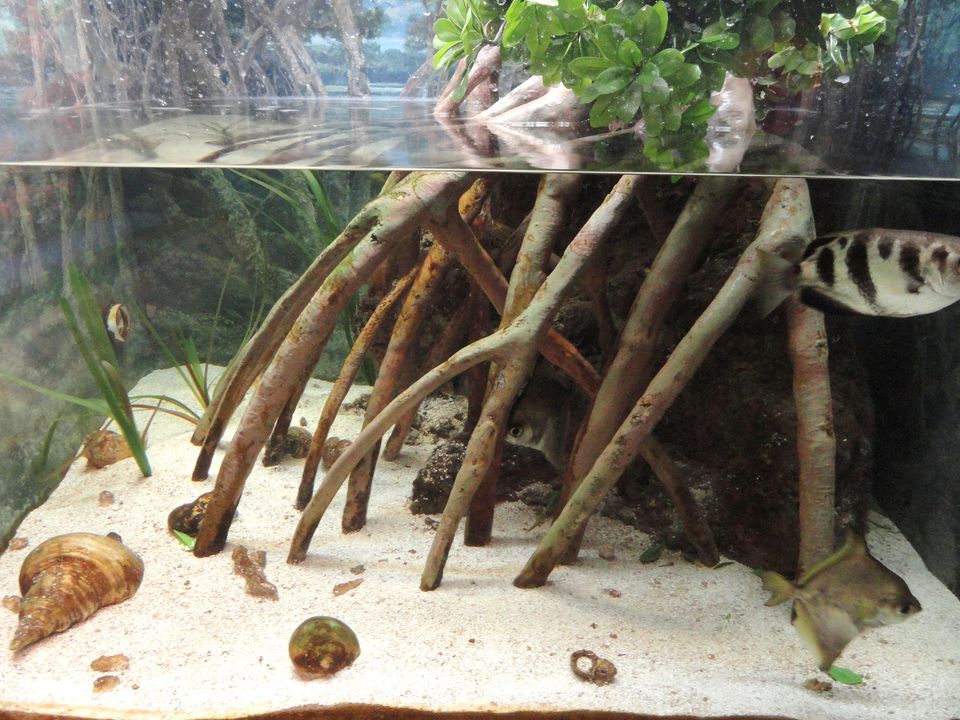The Different Types of Aquarium Lighting and How to Choose the Right One for Your Tank
Proper lighting is essential for the health and well-being of your fish and plants. It can help to create a natural-looking environment, stimulate plant growth, and provide a healthy photoperiod for your fish. Let's explore the different types of aquarium lighting.

Proper lighting is essential for the health and well-being of your fish and plants. It can help to create a natural-looking environment, stimulate plant growth, and provide a healthy photoperiod for your fish. However, with so many different types of aquarium lighting available, it can be difficult to know which one is right for your tank. In this article, we'll explore the different types of aquarium lighting and provide tips on how to choose the right one for your tank.
Fluorescent lighting
Fluorescent lighting is a popular choice for aquariums because it is energy-efficient and provides a wide spectrum of light. Fluorescent bulbs come in a variety of colors, including full-spectrum and actinic (blue), which can be used to mimic the natural light of different environments. Fluorescent lighting is generally not as bright as other types of lighting, so it may not be suitable for tanks with deep water or heavily planted tanks.
To choose the right fluorescent lighting for your tank, consider the following factors:
- Tank size: Fluorescent lighting is generally suitable for smaller to medium-sized tanks.
- Water depth: Fluorescent lighting is generally not suitable for tanks with deep water, as it may not provide enough intensity to reach the bottom of the tank.
- Plant and animal needs: Fluorescent lighting is generally suitable for tanks with low to moderate lighting requirements, such as tanks with low-light plants or fish that prefer low to moderate lighting.
- Cost: Fluorescent lighting is generally more budget-friendly than other types of lighting.
LED lighting
LED lighting is a newer type of aquarium lighting that is becoming increasingly popular. LED bulbs are energy-efficient and long-lasting, and they provide a bright, natural-looking light. LED lighting is available in a wide range of colors and spectrums, and it can be used to simulate different environments. LED lighting is generally more expensive than other types of lighting, but it may be worth the investment in the long run due to its energy-efficient and long-lasting nature.
To choose the right LED lighting for your tank, consider the following factors:
- Tank size: LED lighting is generally suitable for all sizes of tanks.
- Water depth: LED lighting is generally suitable for tanks of all depths, as it provides a bright, intense light.
- Plant and animal needs: LED lighting is generally suitable for tanks with high lighting requirements, such as heavily planted tanks or tanks with high-light plants or coral.
- Cost: LED lighting is generally more expensive than other types of lighting, but it may be worth the investment due to its energy-efficient and long-lasting nature.
Metal halide lighting
Metal halide lighting is a high-intensity lighting option that is often used in saltwater tanks or heavily planted tanks. Metal halide bulbs provide a bright, natural-looking light that can stimulate plant growth and support coral growth. However, metal halide lighting is generally more expensive and requires more maintenance than other types of lighting.
To choose the right metal halide lighting for your tank, consider the following factors:
- Tank size: Metal halide lighting is generally suitable for larger tanks.
- Water depth: Metal halide lighting is generally suitable for tanks of all depths, as it provides a bright, intense light.
- Plant and animal needs: Metal halide lighting is generally suitable for tanks with high lighting requirements, such as heavily planted tanks or tanks with high-light plants or coral.
- Cost: Metal halide lighting is generally more expensive than other types of lighting and requires more maintenance.
Incandescent lighting
Incandescent lighting is an older type of lighting that is not as commonly used in aquariums due to its low efficiency and high heat output. Incandescent bulbs are generally not recommended for use in aquariums due to their high energy consumption and the potential for overheating.
To choose the right incandescent lighting for your tank, consider the following factors:
- Tank size: Incandescent lighting is generally not recommended for use in aquariums due to its low efficiency and high heat output.
- Water depth: Incandescent lighting is generally not recommended for use in aquariums due to its low efficiency and high heat output.
- Plant and animal needs: Incandescent lighting is generally not recommended for use in aquariums due to its low efficiency and high heat output.
- Cost: Incandescent lighting is generally not recommended for use in aquariums due to its low efficiency and high heat output.
Conclusion
Proper lighting is essential for the health and well-being of your fish and plants. By understanding the different types of aquarium lighting and considering the specific needs of your tank, you can choose the right lighting option to create a healthy and natural-looking environment for your fish and plants to thrive.




